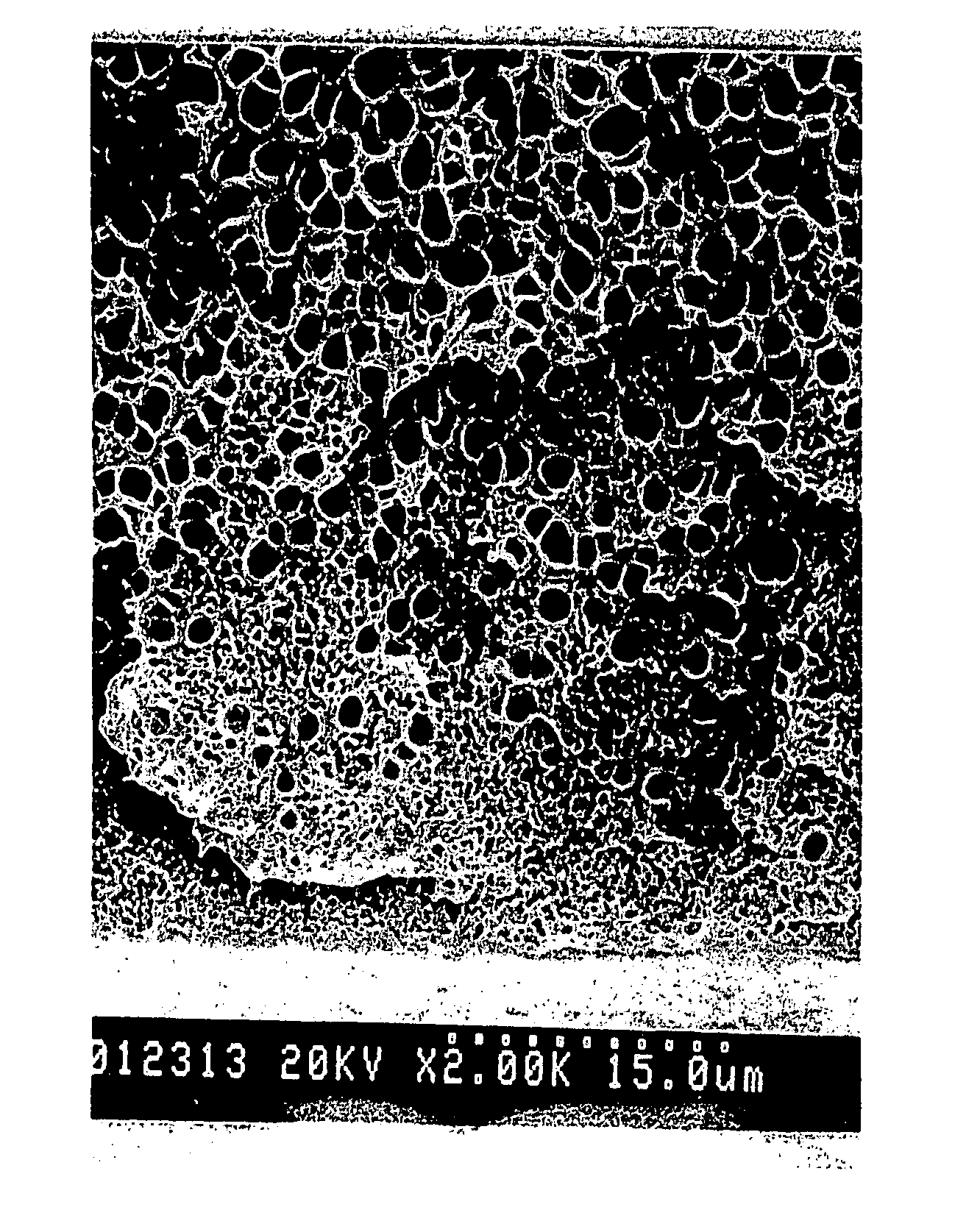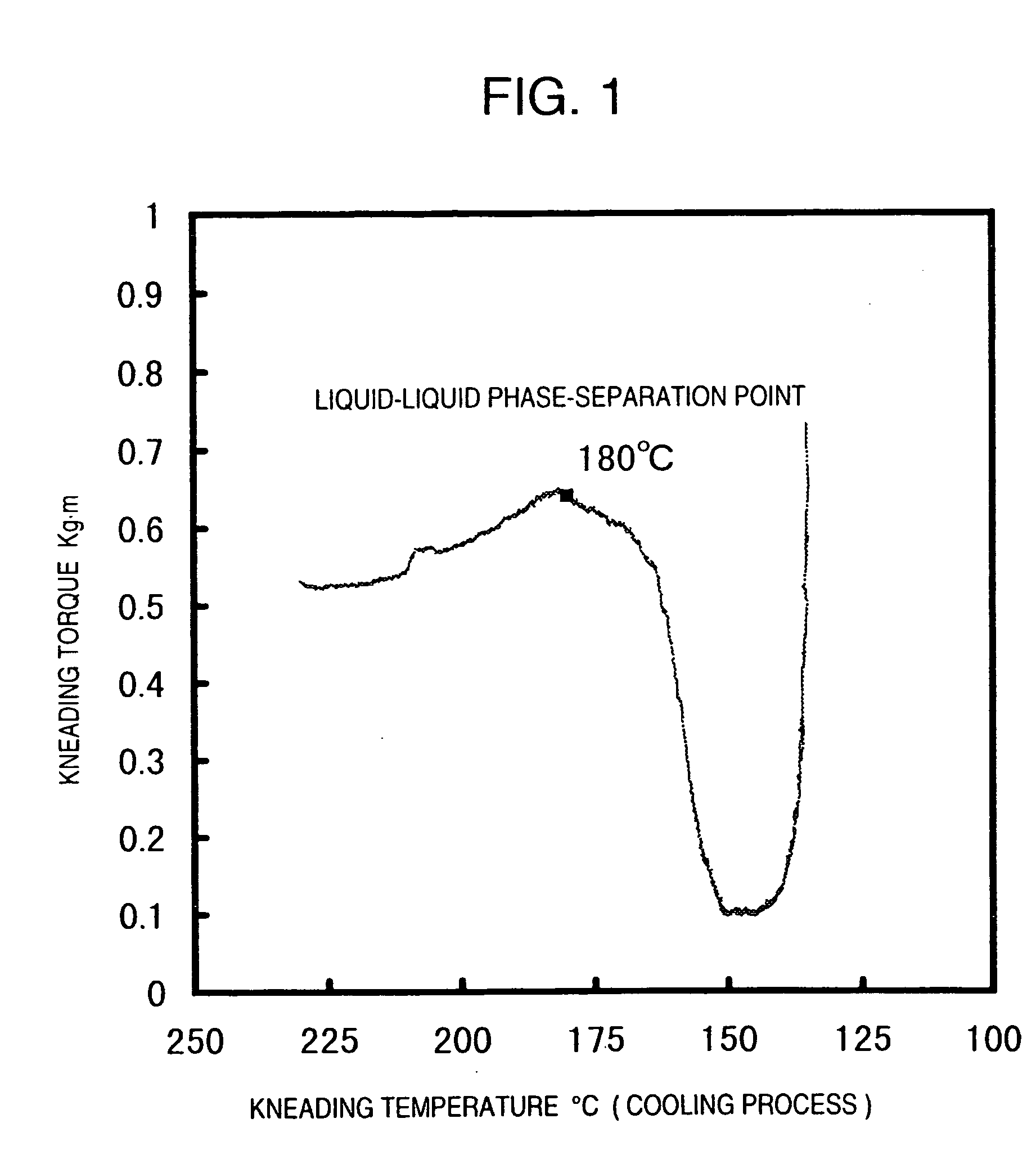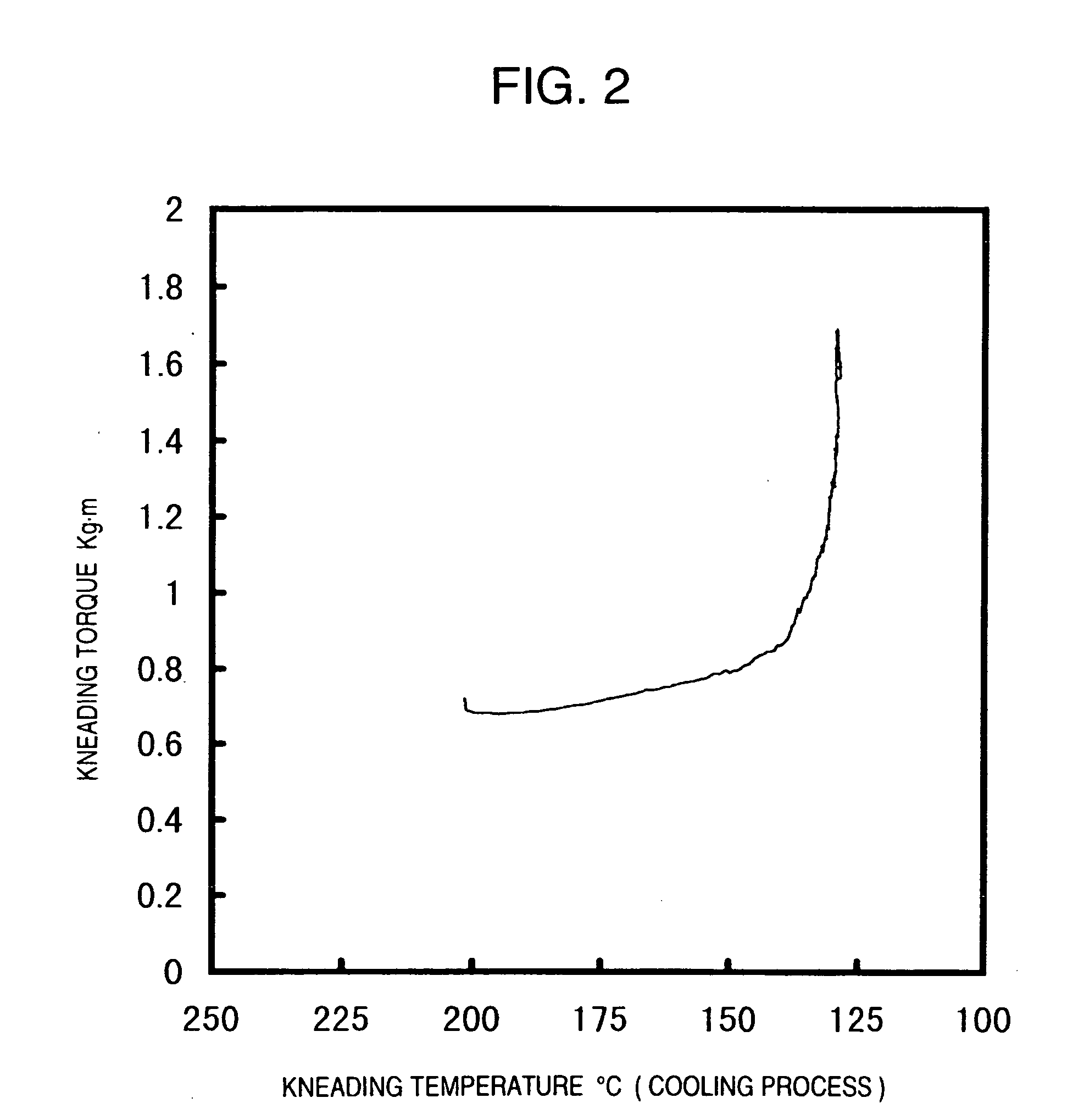Polyolefin microporous membrane
a polyolefin microporous membrane and polyolefin technology, applied in the direction of membranes, cell components, electric/magnetic/electromagnetic heating, etc., can solve the problems of reduced membrane strength, separation of electrodes may be injured, uneven surface of electrodes, etc., to achieve high permeability without decreasing membrane strength and high surface porous structure. uniform
- Summary
- Abstract
- Description
- Claims
- Application Information
AI Technical Summary
Benefits of technology
Problems solved by technology
Method used
Image
Examples
reference example 1
[0122] 40 Parts by weight of a high-density polyethylene (weight average molecular weight 250,000, molecular weight distribution 7, density 0.956), 0.5 part by weight of 2,6-di-t-butyl-p-cresol and 60 parts by weight of di(2-ethylhexyl) phthalate were mixed and then fed into Laboplastomill. They were melt-kneaded for 5 minutes at a kneading temperature of 230° C. and at a screw revolution of 50 rpm, and the stabilization of the resin temperature and the kneading torque were awaited. Then, the change of the kneading torque with a lowered temperature was observed by setting the screw revolution at 10 rpm and air-cooling the kneaded composition from the original temperature of 230° C. by switching off a heater, while continuing the screw kneading, thereby evaluating a phase separation mechanism. From the characteristic graph shown in FIG. 1, it was found that said composition had a thermally induced liquid-liquid phase separation point of 180° C.
reference example 2
[0123] A phase separation mechanism was evaluated by the same method as described in Reference Example 1, except for using 45 parts by weight of the same high-density polyethylene as described in Reference Example 1 and 55 parts by weight of di(2-ethylhexyl) phthalate. It was found that the resulting composition had a thermally induced liquid-liquid phase separation point of 168° C.
reference example 3
[0124] A phase separation mechanism was evaluated by the same method as described in Reference Example 1, except for using liquid paraffin (kinematic viscosity at 37.8° C.: 75.9 cSt) as a solvent and setting the kneading temperature and the original temperature at 200° C. From the characteristic graph shown in FIG. 2, it was found that the resulting composition had no thermally induced liquid-liquid phase separation point.
PUM
| Property | Measurement | Unit |
|---|---|---|
| diameter | aaaaa | aaaaa |
| diameter | aaaaa | aaaaa |
| thickness | aaaaa | aaaaa |
Abstract
Description
Claims
Application Information
 Login to View More
Login to View More - R&D
- Intellectual Property
- Life Sciences
- Materials
- Tech Scout
- Unparalleled Data Quality
- Higher Quality Content
- 60% Fewer Hallucinations
Browse by: Latest US Patents, China's latest patents, Technical Efficacy Thesaurus, Application Domain, Technology Topic, Popular Technical Reports.
© 2025 PatSnap. All rights reserved.Legal|Privacy policy|Modern Slavery Act Transparency Statement|Sitemap|About US| Contact US: help@patsnap.com



